Complete Solutions to EXERCISE of chapter VISUALISING SOLID SHAPES of Class 7 book with complete answers and questions
| Class 7 | MATHS |
| Chapter | VISUALISING SOLID SHAPES |
| PSEB | EXERCISE |
| Number Of Questions | 34 |
| Academic Year | 2023-24 |
Identify the nets which can be used to make cubes (cut out copies of the nets and try it):
View SolutionIdentify the nets which can be used to make cubes (cut out copies of the nets and try it):

View SolutionIdentify the nets which can be used to make cubes (cut out copies of the nets and try it):

View SolutionIdentify the nets which can be used to make cubes (cut out copies of the nets and try it):

View SolutionIdentify the nets which can be used to make cubes (cut out copies of the nets and try it):

View SolutionIdentify the nets which can be used to make cubes (cut out copies of the nets and try it):

View SolutionDice are cubes with dots on each face. Opposite faces of a die always have a total of seven dots on them. Here are two nets to make dice (cubes), the numbers inserted in each square indicate the number of dots in that box Insert suitable numbers in the blanks, remembering that the number on the opposite faces should total to 7

View SolutionCan this be a net for a die? Explain your answer
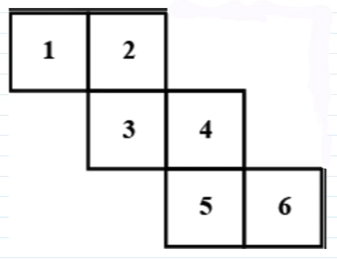
View SolutionHere is an incomplete net for making a cube. Complete it in at least two different ways. Remember that a cube has six faces. How many are there in the net here? (Give two separate diagrams. If you like, you may use a squared sheet for easy manipulation.)
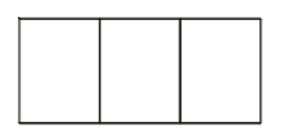
View SolutionMatch the nets with appropriate solids
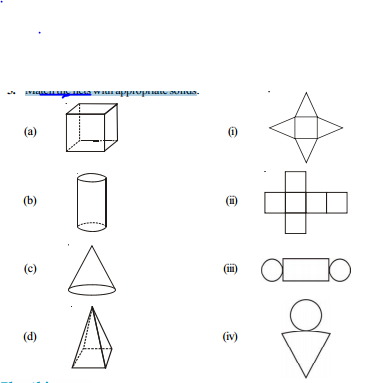
View SolutionUse isometric dot paper and make an isometric sketch for each one of the given shapes:
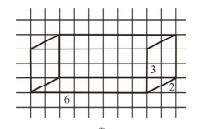
View SolutionUse isometric dot paper and make an isometric sketch for each one of the given shapes:

View SolutionUse isometric dot paper and make an isometric sketch for each one of the given shapes:

View SolutionUse isometric dot paper and make an isometric sketch for each one of the given shapes:

View SolutionThe dimensions of a cuboid are 5 cm, 3 cm and 2 cm.Draw three different isometricsketches of this cuboid
View SolutionThree cubes each with 2 cm edge are placed side by side to form a cuboid. Sketch an oblique or isometric sketch of this cuboid
View SolutionMake an oblique sketch for each one of the given isometric shapes:
View SolutionGive (i) an oblique sketch and (ii) an isometric sketch for each of the following:An isometric sheet is attached at the end of the book. You could try to make on it some cubes or cuboids of dimensions specified by your friend.
A cuboid of dimensions 5 cm, 3 cm and 2 cm. (Is your sketch unique?)
View SolutionGive (i) an oblique sketch and (ii) an isometric sketch for each of the following:An isometric sheet is attached at the end of the book. You could try to make on it some cubes or cuboids of dimensions specified by your friend.
A cube with an edge 4 cm long.
View SolutionIf two cubes of dimensions 2 cm by 2cm by 2cm are placed side by side, what would the dimensions of the resulting cuboid be?
View SolutionWhat cross-sections do you get when you give a
(i) vertical cut (ii) horizontal cut to the following solids?
A brick
View SolutionWhat cross-sections do you get when you give a
(i) vertical cut (ii) horizontal cut to the following solids?
A round apple
View SolutionWhat cross-sections do you get when you give a
(i) vertical cut (ii) horizontal cut to the following solids?
A die
View SolutionWhat cross-sections do you get when you give a
(i) vertical cut (ii) horizontal cutto the following solids?
A circular pipe
View SolutionWhat cross-sections do you get when you give a
(i) vertical cut (ii) horizontal cutto the following solids?
An ice cream cone
View SolutionA bulb is kept burning just right above the following solids. Name the shape of the shadows obtained in each case. Attempt to give a rough sketch of the shadow. (You may try to experiment first and then answer these questions)

View SolutionA bulb is kept burning just right above the following solids. Name the shape of the shadows obtained in each case. Attempt to give a rough sketch of the shadow. (You may try to experiment first and then answer these questions).
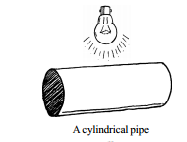
View SolutionA bulb is kept burning just right above the following solids. Name the shape of the shadows obtained in each case. Attempt to give a rough sketch of the shadow. (You may try to experiment first and then answer these questions).
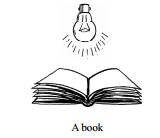
View SolutionHere are the shadows of some 3-D objects, when seen under the lamp of an overhead projector. Identify the solid(s) that match each shadow. (There may be multiple answers for these!)

View SolutionHere are the shadows of some 3-D objects, when seen under the lamp of an overhead projector. Identify the solid(s) that match each shadow. (There may be multiple answers for these!)
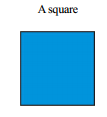
View SolutionHere are the shadows of some 3-D objects, when seen under the lamp of an overhead projector. Identify the solid(s) that match each shadow. (There may be multiple answers for these!)
View SolutionHere are the shadows of some 3-D objects, when seen under the lamp of an overhead projector. Identify the solid(s) that match each shadow. (There may be multiple answers for these!)
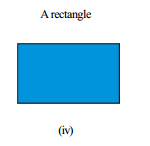
View SolutionExamine if the following are true statements:
The cube can cast a shadow in the shape of a rectangle.
View SolutionExamine if the following are true statements:
The cube can cast a shadow in the shape of a hexagon.
View Solution
EXERCISE questions and complete solutions for chapter VISUALISING SOLID SHAPES of PSEB of Class 7